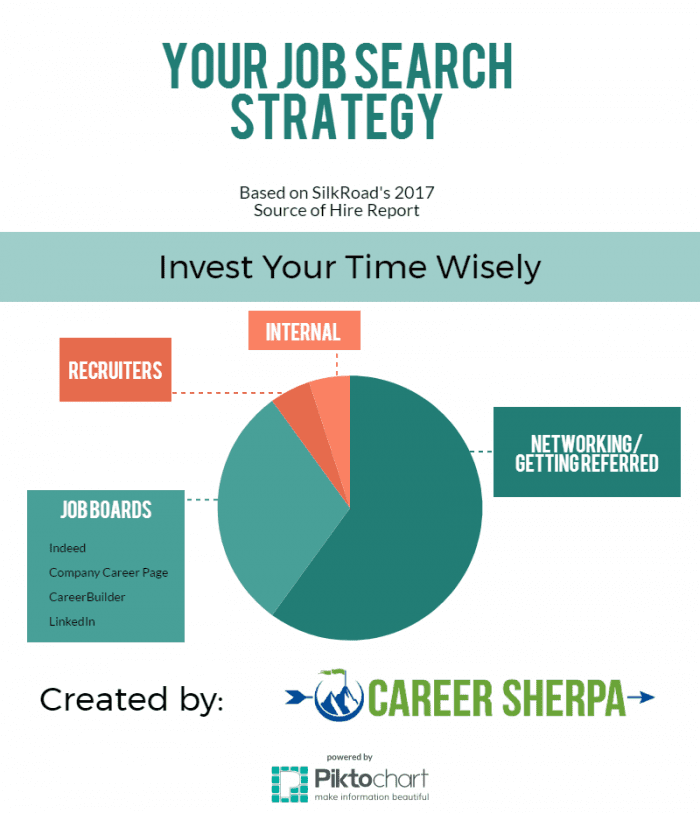When you understand the different ways companies fill jobs, you can reverse engineer your job search and land a new job faster…really!
This is the 6th year SilkRoad has analyzed company data to compile this source of hire report. Technically, it is written for HR leaders and recruiters to help them source and hire new employees better, however, it is equally valuable for the active careerist (and job seeker) too!
Take a gander at the chart below from the report. And pay attention to the green bars in the figure below, those represent hires!
When the blue bars (interviews) are higher than the green bars (hires), that represents more competition. Invest more time where there is less competition!
Now, let’s develop a new strategy for your job search- employed or unemployed. Use the information to develop your new action plan for finding a new job!
#1: Employee Referrals
To tap into the power of employee referrals, you need to do two things. Know where people in your network work and identify companies you would like to work for. Do your research now, before you begin randomly applying for jobs. Identify companies you would like to work for. Armed with that list, begin strategically networking with people and let them know what companies and types of jobs you are interested in.
Step 1: Identify companies you would like to work for. Armed with that list, begin strategically networking with people and let them know what companies and types of jobs you are interested in.
Step 2: Armed with that list, identify everyone you know who work for those companies (using LinkedIn, Facebook, any other social network and by asking people you know).
Step 3: Begin strategically networking with people you’ve identified.
#2: Indeed
Maximize the time you invest looking at job postings. Use Indeed as your primary source of job postings. Be smart and set alerts. And always use the 2-Step method outlined here.
#3: Current Employee
Employed and looking? Don’t overlook jobs within your current company. In order to learn about jobs outside of your area, you’ll need to network inside your company.
#4: Recruiter Sourced
This means a recruiter found you. Make sure your LinkedIn profile has the right skills/keywords for the jobs you are interested in. This helps recruiters find you. Search for recruiters who specialize in the types of job (or companies) you are interested in and ask people what recruiters they have had success working with. Build relationships with reputable recruiters. Remember, recruiters don’t work for you. They are hired by companies to fill jobs. Make sure you understand how recruiters operate.
#5: Career Site/Website
Go directly to the source. Companies post jobs on their own website, often on a “career” page. Use your list of target companies and visit each company’s career page. See if you can set alerts. Make time each week to check each company’s page for new jobs.
#6: CareerBuilder
CareerBuilder is another job board to invest your time using. As with Indeed, set up alerts so you don’t waste your time searching all new job postings.
#7: LinkedIn
LinkedIn has a job board. Use it. This is the lowest of the top sources of hires, so allocate your time appropriately.
YOUR JOB SEARCH STRATEGY
Be strategic. Be pro-active.
For more help structuring your job search, follow the process mapped out here: 6 Steps To Managing Your Job Search

Hannah Morgan speaks and writes about job search and career strategies. She founded CareerSherpa.net to educate professionals on how to maneuver through today’s job search process. Hannah was nominated as a LinkedIn Top Voice in Job Search and Careers and is a regular contributor to US News & World Report. She has been quoted by media outlets, including Forbes, USA Today, Money Magazine, Huffington Post, as well as many other publications. She is also author of The Infographic Resume and co-author of Social Networking for Business Success.



